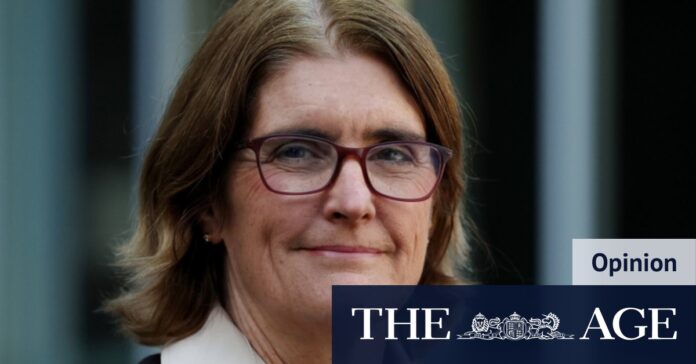[ad_1]
That woosh-like sound on Wednesday morning was the collective sigh of relief as the latest and unexpectedly low inflation data numbers were released – in turn boosting borrowers’ confidence that after 20 months the cycle of rate rises has come to an end.
This is almost the last major puzzle piece that the Reserve Bank will get before it decides which way to jump at its February monetary policy meeting. But there was nothing in Wednesday’s November inflation data that would provide an incentive or excuse to raise rates in three weeks.

Reserve Bank governor Michele Bullock’s inflation-busting credentials have improved thanks to latest CPI figures.Credit: Dominic Lorrimer
The consumer price index fell to its lowest level in almost two years – rising 4.3 per cent in the 12 months to November, down from the rise of 4.9 per cent in October – sealing the deal that barring something from left field, the Reserve Bank has finished the heavy lifting on taming inflation.
At the end of January, we will see the December quarter read for inflation. We already have the answers for October and November, and there is almost no expectation that inflation spiked in the final month of the year.
The icing on the cake is that services inflation, which has been tougher to control, showed strong signs of coming down in November. It had been a hold out that had concerned the Reserve Bank but in November, it fell from 5 per cent to 4.7 per cent.
The usual suspects such as housing, including rents, gas and electricity and insurance, were the categories where inflation remains strong.
So now there’s a new game in town – predicting when the Reserve Bank might begin cutting rates.
Relatively strong price rises in food will provide fodder for politicians to attack supermarket prices, but interestingly within that food subset, meat and seafood rose just 0.2 per cent and fruit and vegetables grew only 0.7 per cent.
It’s in dairy produce, cereals and bread that prices are particularly elevated in November – even though food inflation overall experienced a better outcome than it did in October.
[ad_2]
Source link


